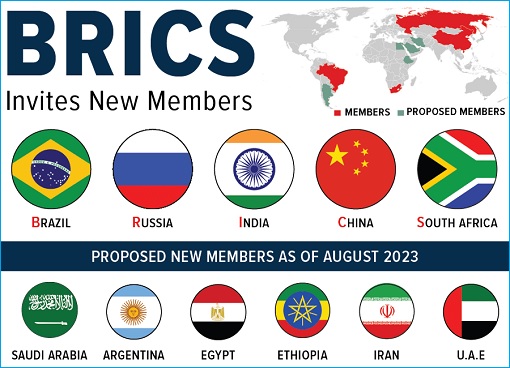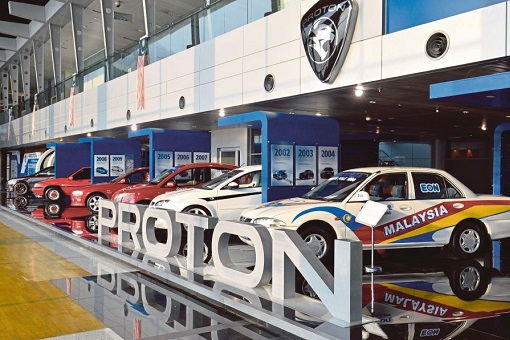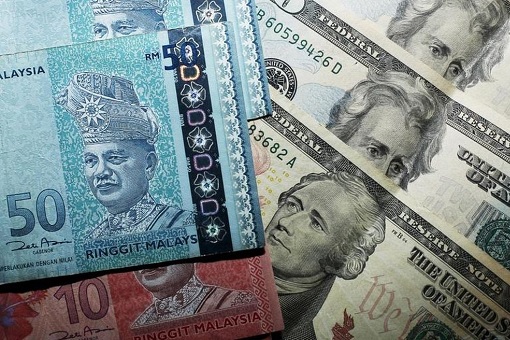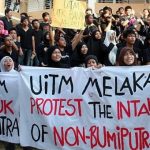China has been Malaysia’s crucial partner since 2009, with total trade last year hitting RM450.84 billion (US$95.65 billion). Although trade with China fell by 7.3% in 2023, China continued to be Malaysia’s largest trading partner for 15 consecutive years, commanding 17.1% share of Malaysia’s total trade. In comparison, the U.S.-Malaysia commerce declined by 6.5% to RM250.25 billion.
While the United States made up 9.5% of Malaysia’s total trade, the European Union, which constituted 7.8% of Malaysia’s total trade in 2023, dropped by 4.4% to RM206.69 billion. Essentially, ASEAN remained a key trading partner for Malaysia, taking up 27.3% of total trade in 2023 – valued at RM720.66 billion, a decrease of 6.5% compared to 2022.
A breakdown shows Malaysia’s top three export destinations within ASEAN in 2023 were Singapore (RM219.33 billion), Thailand (RM58.71 billion)and Vietnam(RM52 billion),which accounted for 78.5% of Malaysia’s total exports to the region. Clearly, China is as important as the U.S. and E.U. combined. Even Malaysia’s total exports to all the nine ASEAN nations (RM420.3 billion) are no match to China-Malaysia total trade.

That alone is enough to justify why Malaysia should join BRICS yesterday. Indeed, it was a both no-brainer and smart decision when Prime Minister Anwar Ibrahim announced the country’s desire to join five major emerging economies – BRICS – comprises Brazil, Russia, India, China and South Africa. When even France had expressed interest to join BRICS, how could Malaysia resist such temptation?
Founded in 2006, the bloc, which represents about one-third of global wealth (36%), nearly half of the world’s population (45%) and covers about 26.7% of the world’s land surface, is expected to contribute over 50% of global GDP by 2030. This compared to the Group of Seven (G7) – comprising Canada, France, Germany, Italy, Japan, the United Kingdom and the United States – that saw its global GDP plunged to 30.7%.
Having overtaken the G7 countries share of the world’s total gross domestic product (GDP) in terms of purchasing power parity (PPP) in 2020, all the five nations of BRICS are also members of G20 or “Group of Twenty”. Of course, China has the largest GDP of the BRICs country at US$18 trillion. In a blow to G7, the BRICS saw 34 countries having formally and informally applied to join the alliance.

In January 2024, in its first expansion in 13 years, the bloc expanded its membership to include 6 new members effective January 1, 2024, namely Egypt, Ethiopia, Iran, Saudi Arabia, the United Arab Emirates (UAE) and Argentina (Argentina’s anti-Chinese new leader – president Javier Milei – has however withdrawn the country from its planned entry into the club).
Pro-Western news media, as expected, had played down – even laughed – at the enlarged bloc as nothing but merely a symbolic achievement. The “historic” expansion was belittled as a group of mixture of autocratic nations with middle-income and developing democracies, members with clueless goals, and a bloc of anti-western nations that are facing dire economic problems.
On the surface, the new members might not add too much value to BRICS, as Saudi is the only trillion dollar economy among the new entrants. Geo-politically, it was a huge victory for China and Russia. Originally, all the BRICS countries – except Russia – were non-energy producing countries before the expansion. Now, with Saudi Arabia, Iran and UAE as members, BRICS countries produce about 44% of the world’s crude oil.

Iran holds the world’s second-largest gas reserves and a quarter of the oil reserves in the Middle Eat. The access to BRICS will allow it to strengthen its economic and political ties with non-Western powers. On top of selling discounted oil to China, it can boost its economic ties with Beijing, as well as deepening security and military partnership with Russia.
The inclusion of Saudi and the UAE, two of the world’s largest energy suppliers and financial heavyweights in the Middle East, was deliberately designed to disrupt the U.S. world order. Even though both Gulf nations are still American allies, and will continue to rely on the U.S. to protect them militarily, they also wanted the membership in the BRICS to balance out its traditional partnerships with the U.S.
BRICS is more than a toothless and boring club. In 2014, it set up the New Development Bank to lend money to boost infrastructure. By the end of 2022, it had provided nearly US$32 billion to emerging nations for new roads, bridges, railways and water supply projects. While Russia is leveraging BRICS to fight against NATO, China – the main driver – is growing its power and influence, especially in the “Global South”.

In the same breath, Malaysia has many reasons to join BRICS. The announcement to move into China’s orbit was no coincidence. It was done to impress upon Chinese premier Li Qiang, who made a three-day (June 18-20) visit to Malaysia to mark the 50th anniversary of Malaysia-China diplomatic relations. Malaysia’s strategic geographical location along the Malacca Strait attracts huge China’s interest and investment.
Speaking on the 665km-long ECRL (East Coast Rail Link) – costing RM50.2 billion – Premier Li expressed China’s readiness to collaborate closely with Malaysia to ensure the project becomes a path to prosperity and happiness that benefits the people. The railway that will link Peninsular Malaysia’s east and west coasts by the end of 2026 may be extended to its neighbours.
The plan included connecting the ECRL to other China-backed railway projects in Laos and Thailand, potentially expanding Beijing’s Belt and Road initiative (BRI) across Southeast Asia. The controversial project tainted by 1MDB scandal, mega-corruption involving billions by former PM Najib Razak, was a collaboration between Malaysia Rail Link Sdn Bhd (MRL) and CCCC (China Communications Construction Co.).

Another project is the Aerotrain Replacement Project at Kuala Lumpur International Airport (KLIA), where the new aerotrains are sourced from China. The US$100 billion Forest City, supposedly a smart and green futuristic city that combines environment, technology and cutting-edge technology in Johor Bahru, but is plagued by years of delays, low uptake and controversy is another Chinese investment.
From RM43 billion Melaka Gateway, one of Najib’s many asset sales to China in order to cover up 1MDB debts after tens of billions of Ringgit were siphoned by the despicable prime minister and his partner-in-crime Jho Low, to the RM100 billion Waterfront Economic Zone, China’s fingerprints are all over the country. But Chinese investments were not confined to mega infrastructure projects alone.
ByteDance, the parent company of popular social media platform TikTok, has announced plans to catalyze Malaysia’s artificial intelligence (AI) sector by investing RM10 billion to turn the nation into a regional AI hub. During the Malaysia-China Business Summit in Beijing in April 2023, PM Anwar secured a record RM170 billion worth of investments from China with 19 MOUs (memorandums of understanding).

Malaysia, who tried to build its own car – Proton Saga – under then-PM Mahathir Mohamad, but could not even fix the “power window” problem for decades had to sell 49.9% to Zhejiang Geely Holding Group in 2017. Proton had received RM13.9 billion in government subsidies since it was set up in 1983 in order to stay alive. Mahathir argued it must be continuously protected because it buys parts mostly from Malay vendors and employs almost only Malays.
Within 2 years of Geely acquisition, the long-time loss-making Proton became profitable in 2019 – thanks to the Chinese company’s introduction of new products, technology and management in Malaysia. From 64,744 units sold in 2018, Proton sold a whopping 154,000 units last year – boosting its market share to 19.4% in 2023 compared to merely 12.1% in 2018.
But Anwar has a bigger problem which he hopes to fix by joining BRICS. Despite throwing everything, including the kitchen sink to prop up Ringgit, it remains stubbornly low against the U.S. dollar. One way to boost the local currency is to increase the use of the Ringgit with its trading partners. And the only way to do this is de-dollarization – using local currencies instead of the dollar in trade settlement.

Malaysia can still use dollar to trade with the U.S. and Europe, but it does not make sense to use the greenback when trade with China, BRICS nations or within ASEAN. After all, China is among the top importers of palm oil from Malaysia, unlike the EU’s discrimination against palm oil produced in Malaysia. Of course, China loves Malaysia’s spiky, smelly fruit called durian, whereas there’s no market in the West.
While the prime minister has pledged to remain neutral on the geopolitical rivalry between China and the U.S., the once pro-Western Anwar has now accused some Western powers of “China-phobia“. This is not because he finds President Xi Jinping attractive like Justin Timberlake, but largely because the West is supporting Israel’s war against his best friend Hamas.
More importantly, unlike BRICS that features mutual respect and understanding, equality, solidarity, openness, inclusiveness and consensus, the exclusive club G7 is dominated by America, whose policy is to use sanctions and economic blackmail to force other countries into submission. This is the primary reason why Saudi joins BRICS, a strategy to hedge against Washington.

Therefore, BRICS will not only help Malaysia to further diversify its trade and investment, but will also insulate the country from the changes in the U.S.’ monetary policy and currency volatility, as well as to align with a new economic and military powerhouse that could rival bully United States. BRICS allows Malaysia to navigate geopolitical issues while maintaining its non-aligned and independent stance.
Sure, China claims almost the entire South China Sea. However, it was more to protect itself against the Western power rather than to invade or colonize any of the 10-member ASEAN nations. If the powerful Ming Dynasty wanted to, it could easily gobble up Malacca (modern Melaka), but chose to protect it instead. It was the Portuguese (1511), Dutch (1641) and British (1824) that had colonized Malacca.
Other Articles That May Interest You …
- Bullying Won’t Work – Yellen Begs China To Cut Overcapacity To Save US Workers, Whilst Threatens Beijing Not To Support Russia
- BYD Beats Tesla Again – How The U.S. Carmaker Lost Its Crown As World’s Top Electric Vehicles Manufacturer
- De-Dollarization Kicks Into High Gear – Chinese Yuan Hit Record High, Overtook Japanese Yen As 4th Most Used Currency
- This Is Just The Beginning – These Charts Show The Impact Of The BRICS Expansion, And How 6 New Members Were Selected
- BRICS Currency Backed By Gold – Last Year Yellen Bragged U.S. Dollar Can’t Be Challenged, Now She’s Not Sure Anymore
- De-Dollarization Going Global – Why This Ex-Goldman Chief Economist Encourages BRICS To Challenge US Dollar Dominance
- Moscow & Beijing Laughing All The Way To The Bank – How China Makes Easy Money Reselling Russian Gas To Europe
- Saudi Arabia Wants To Join BRICS – Here’s Why US Dollar’s Global Dominance Is Toast
- Economists Thought China’s Economy Depends On The World – But McKinsey Research Shows Otherwise
- From Trade War To Tech War – After 5G Technology, The US Aims To Cripple China’s Artificial Intelligence
- China’s New Message To The U.S. – “Negotiate – Sure!”, “Fight – Anytime!”, “Bully Us – Dream On!”

|
|
June 20th, 2024 by financetwitter
|


|

|

|

|

|

|




























Comments
Add your comment now.
Leave a Reply